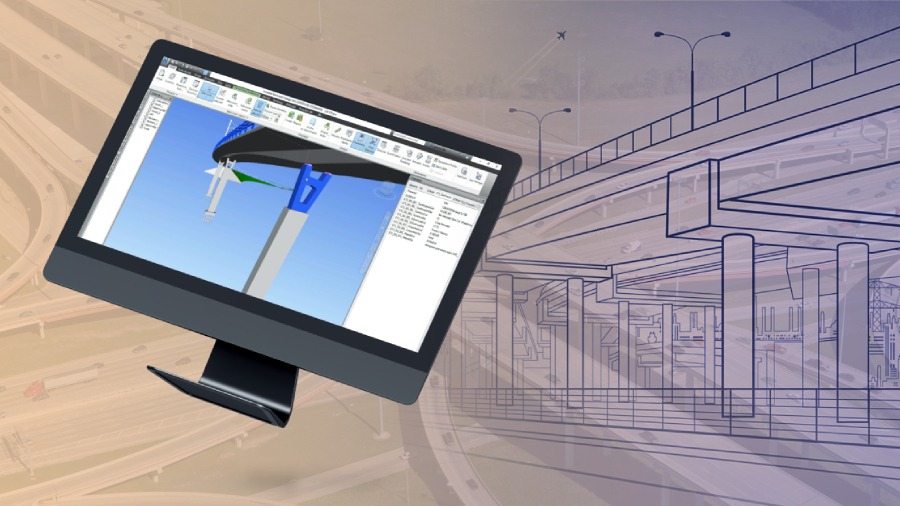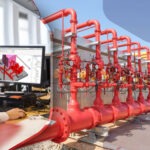Infrastructure is the fundamental facility and system that are required at every stage. It is the process that delivers the sustainable functionality of different sectors and firms. Infrastructure development is utilized for both public and private structures. These structures are roads, railways, bridges, tunnels, water supply, sewers, electrical grids, and telecommunications. In all these areas, the use of BIM is a must.
The construction and infrastructure market is expected to be the third-largest business sector. It is the way that will lead to sustainable development in the country. This is why a strong base of infrastructure development is a mandated process for centuries. The forecast for infrastructure development is estimated to grow by 5% to 7%. For making it a success an estimated investment planned is about INR 102 to INR 105 lakh crores by 2024-25.
The use of BIM in infrastructure development has seen tremendous growth in the last couple of years. As per the reports, the growth rate has increased to more than 52% in 2017, compared to 2015 which was 20%. This further is expected to grow in continuation. In the infrastructure development project, BIM is the base. It helps contractors, architects, engineers, and constructors to visualize the model and integrate the next course of action.
The main importance of this service is its process that helps identify the potentiality of the design, along with operational and managerial issues. The technology of BIM is an innovative concept that is opening new ways and paradigms within AEC companies.

Looking into the growth and increasing percentage of projects that use BIM, owners, engineers, contractors, sub-contractors, and general contractors have started considering the benefits from its use. For infrastructure projects, it is necessary to view the designs and drawings in 3D form, and thus it goes with a 3D view of the assets.
BIM Implementation Planning for Infrastructure
BIM technology is the latest and most innovative form in the construction business. The undertaking of BIM is beneficial for all types of projects, be it for railways, roads, bridges, freight corridors, metros, and more. For all this work, there is a need to undertake 3D infrastructure model services, that help build the digital structure of the model, along with the evaluation of the design information, technical drawings, plans, elevations, etc.
It is not at all wrong in saying that BIM implementation support reflects the pattern and evolving data that have been observed working in different business sectors. This in turn has given a positive approach and thus will likely continue this in an advanced way.

Taking it further, for all types of infrastructure development programs or projects, the firm uses BIM which is beneficial, advantageous, and worth investing in. It is the BIM model that helps identify the potential issues in the existing structure or for any new project. As stated it is the set of the service that is been used in a lot many areas and having said this here are some of the general details and discussion shared.
The infrastructure project has many sectors in which this BIM is been used. Let us check on some of them.
1. How BIM helps in Road and Bridge Project
For all small and big road and bridge construction projects, it is necessary to undertake BIM technology. It is the way that provides 3D visualization of the design along with the integration of 4D BIM and 5D BIM technology. It is with no second thoughts to be said that this is indeed giving a process which is accurate and gives great management construction process. To get the key information of the project such as quantities, schedule, and budget of the work, it is necessary to have BIM innovative technology used with the proper association.
2. Why BIM is used for rails, corridors, and metros project
Rails, corridors, and metro projects are meant to be one of the biggest time-consuming projects, and thus, to streamline the work, people use some of the most advanced technology and process. When we say this, it clearly puts a light on BIM tech service. Let us now see how it is beneficial to these big projects.
- It delivers the design and drawings in 3D augmented and virtual reality form. This thus helps in getting the information of the smallest data that is playing an important role.
- The team of contractors, sub-contractors, and staff is able to view the project in-real way before the start of the project at the construction site.
- It helps in knowing the value and time that needs to be invested in the project along with the manpower.
- With proper scheduling and data sharing the work of a project from its start to its end becomes easier, simpler, and faster.
Read also: Why Is BIM Methodology Essential For Managing Infrastructure Projects?
Benefits of Taking Help from An Outsourcing BIM Company
There are a lot many advantages of connecting with BIM Outsourcing companies. Getting help and support from the team of experts indeed is one of the wisest decisions. Here are some of the benefits associated with it:
- Proper Strategy and Its Implementation Process
- Reduces construction cost enhances the project productivity
- Easy to understand design and implementation process
- Can have access to Virtual and Augmented Reality for planning and designing use
- Real-time access on the update of the project and working on its feedback parallelly.
- Operations and Maintenance work clearly visible in pre and post-construction work.
- Enables the development work with accuracy and precision
- Provide the potential to reduce the construction cost and further optimize the proper use of materials and manpower.
- Increases the visibility of the project and its outcome.
Wrapping Up
Upon reading this blog, it is clear how and why BIM technology is helping the infrastructure sector and why there is used to undertake this service. Get in touch with the team of experts and take the best benefit of their expertise into your project.



